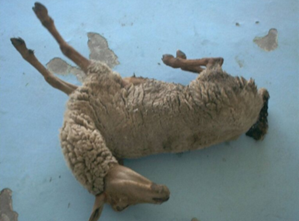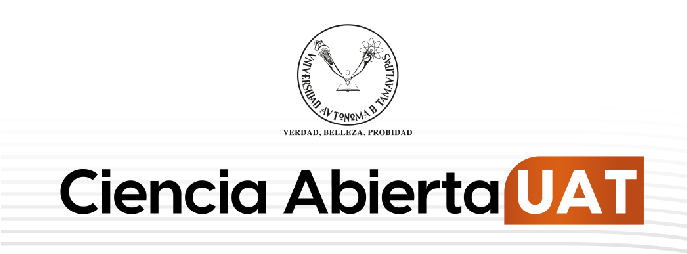Pathology hallmarks of Clostridium perfringens infection in domestic animals
DOI:
https://doi.org/10.29059/cvpa.v2i1.22Keywords:
Clostridium perfringens, diarrhea, enteritis, enterotoxemia, toxinsAbstract
Clostridium perfringens infections are frequent in domestic animals and humans. It is an anaerobic, Gram-positive, rod-shaped, spore-producing, aerotolerant bacterium. This agent can inhabit soil as well as the intestinal microbiota of healthy adult animals, which favors dissemination in the environment. It is the main cause of enterotoxemia, although it is not the main actor in the definitive diagnosis. The production of toxins, classified from type A to G, and the subsequent toxemia occur in young and adult animals, causing up to 100% mortality. Pathological findings include various degrees of enteritis (ileum and colon), diarrhea and lesions in the brain and midbrain, urinary system and muscle due to severe endothelial damage. It is important to know the pathological findings of the different toxinotypes associated with this bacterium in order to learn about this disease and be able to control its appearance.
References
Abd El-Hack, M. E., El-Saadony, M. T., Elbestawy, A. R., El-Shall, N. A., Saad, A. M., Salem, H. M., El-Tahan, A. M., Khafaga, A. F., Taha, A. E., AbuQamar, S. F., & El-Tarabily, K. A. (2022). Necrotic enteritis in broiler chickens: disease characteristics and prevention using organic antibiotic alternatives – a comprehensive review. Poultry Science, 101(2), 101590. https://doi.org/10.1016/j.psj.2021.101590 DOI: https://doi.org/10.1016/j.psj.2021.101590
Ali Nasir, A., Younus, M., Rashid, A., Abdul Khaliq, S., Khan, E., Shah, S. H., Aslam, A., Ghumman, M. A., & Joiya, M. H. (2015). Clinico-pathological findings of Clostridium perfringens type D enterotoxaemia in goats and its hemolytic activity in different erythrocytes. Iranian Journal of Veterinary Research, 16(1), 94-99.
Bokori‐Brown, M., Savva, C. G., Fernandes da Costa, S. P., Naylor, C. E., Basak, A. K., & Titball, R. W. (2011). Molecular basis of toxicity of Clostridium perfringens epsilon toxin. The FEBS journal, 278(23), 4589-4601. DOI: https://doi.org/10.1111/j.1742-4658.2011.08140.x
Caserta, J. A., Robertson, S. L., Saputo, J., Shrestha, A., McClane, B. A., & Uzal, F. A. (2011). Development and application of a mouse intestinal loop model to study the in vivo action of Clostridium perfringens enterotoxin. Infection and Immunity, 79(8), 3020-3027. https://doi.org/10.1128/IAI.01342-10 DOI: https://doi.org/10.1128/IAI.01342-10
Cooper, K. K., & Songer, J. G. (2010). Virulence of Clostridium perfringens in an experimental model of poultry necrotic enteritis. Veterinary Microbiology, 142(3-4), 323-328. https://doi.org/10.1016/j.vetmic.2009.09.065 DOI: https://doi.org/10.1016/j.vetmic.2009.09.065
Cooper, K. K., Songer, J. G., & Uzal, F. A. (2013). Diagnosing clostridial enteric disease in poultry. Journal of Veterinary Diagnostic Investigation, 25(3), 314-327. https://doi.org/10.1177/1040638713483468 DOI: https://doi.org/10.1177/1040638713483468
Eroksuz, Y., Otlu, B., Calicioglu, M., Eroksuz, H., Akdeniz Incili, C., Karabulut, B., & Abayli, H. (2018). Enterotoxemia caused by Clostridium perfringens type E in a Calf. Kafkas Universitesi Veteriner Fakultesi Dergisi, 24(6), 905-908. https://doi.org/10.9775/kvfd.2018.19952 DOI: https://doi.org/10.9775/kvfd.2018.19952
Ferreira, M., Moreira, G., Cunha, C., Mendonça, M., Salvarani, F., Moreira, Â., & Conceição, F. (2016). Recombinant alpha, beta, and epsilon toxins of Clostridium perfringens: production strategies and applications as veterinary vaccines. Toxins, 8(11), 340. https://doi.org/10.3390/toxins8110340 DOI: https://doi.org/10.3390/toxins8110340
Finnie, J. W., & Uzal, F. A. (2024). Neurotoxicity of Clostridium perfringens type D enterotoxemia. In Natural Molecules in neuroprotection and Neurotoxicity Chapter 31. M. R. Oliveira (Ed.), (pp. 701-717). Academic Press. https://doi.org/10.1016/B978-0-443-23763-8.00066-X DOI: https://doi.org/10.1016/B978-0-443-23763-8.00066-X
Forti, K., Ferroni, L., Pellegrini, M., Cruciani, D., De Giuseppe, A., Crotti, S., Papa, P., Maresca, C., Severi, G., Marenzoni, M. L., & Cagiola, M. (2020). Molecular characterization of Clostridium perfringens strains isolated in Italy. Toxins, 12(10), 650. https://doi.org/10.3390/toxins12100650 DOI: https://doi.org/10.3390/toxins12100650
Freedman, J. C., McClane, B. A., & Uzal, F. A. (2016). New insights into Clostridium perfringens epsilon toxin activation and action on the brain during enterotoxemia. Anaerobe, 41, 27-31. https://doi.org/10.1016/j.anaerobe.2016.06.006 DOI: https://doi.org/10.1016/j.anaerobe.2016.06.006
Gangwar, N. K., Pawaiya, R. V. S., Gururaj, K., Singh, D. D., Andani, D., Kumar, A., Sharma, D. K., Rao, A. R., & Rai, A. (2021). Chemotactic factor inducing Interleukin-8 (IL8) geneis transcriptionally elevated in experimental enterotoxaemia in goats caused by Clostridium perfringens type D. Heliyon, 7(7), e07568. https://doi.org/10.1016/j.heliyon.2021.e07568 DOI: https://doi.org/10.1016/j.heliyon.2021.e07568
Garcia, J. P., Beingesser, J., Fisher, D. J., Sayeed, S., McClane, B. A., Posthaus, H., & Uzal, F. A. (2012). The effect of Clostridium perfringens type C strain CN3685 and its isogenic beta toxin null mutant in goats. Veterinary Microbiology, 157(3-4), 412-419. https://doi.org/10.1016/j.vetmic.2012.01.005 DOI: https://doi.org/10.1016/j.vetmic.2012.01.005
Grenda, T., Jarosz, A., Sapała, M., Grenda, A., Patyra, E., & Kwiatek, K. (2023). Clostridium perfringens—Opportunistic foodborne pathogen, Its diversity and epidemiological significance. Pathogens, 12(6), 1-12. https://doi.org/10.3390/pathogens12060768 DOI: https://doi.org/10.3390/pathogens12060768
Hassan, K. A., Elbourne, L. D. H., Tetu, S. G., Melville, S. B., Rood, J. I., & Paulsen, I. T. (2015). Genomic analyses of Clostridium perfringens isolates from five toxinotypes. Research in Microbiology, 166(4), 255-263. https://doi.org/10.1016/j.resmic.2014.10.003 DOI: https://doi.org/10.1016/j.resmic.2014.10.003
He, X., Ye, G., Xu, S., Chen, X., He, X., & Gong, Z. (2023). Effects of three different probiotics of Tibetan sheep origin and their complex probiotics on intestinal damage, immunity, and immune signaling pathways of mice infected with Clostridium perfringens type C. Frontiers in Microbiology, 14(April), 1-13. https://doi.org/10.3389/fmicb.2023.1177232 DOI: https://doi.org/10.3389/fmicb.2023.1177232
Jayaraman, S., Thangavel, G., Kurian, H., Mani, R., Mukkalil, R., & Chirakkal, H. (2013). Bacillus subtilis PB6 improves intestinal health of broiler chickens challenged with Clostridium perfringens-induced necrotic enteritis. Poultry Science, 92(2), 370-374. https://doi.org/10.3382/ps.2012-02528 DOI: https://doi.org/10.3382/ps.2012-02528
Keyburn, A. L., Bannam, T. L., Moore, R. J., & Rood, J. I. (2010). NetB, a Pore-forming toxin from necrotic enteritis strains of Clostridium perfringens. Toxins, 2(7), 1913-1927. https://doi.org/10.3390/toxins2071913 DOI: https://doi.org/10.3390/toxins2071913
Kiu, R., & Hall, L. J. (2018). An update on the human and animal enteric pathogen Clostridium perfringens. Emerging Microbes and Infections, 7(1). https://doi.org/10.1038/s41426-018-0144-8 DOI: https://doi.org/10.1038/s41426-018-0144-8
Kusiluka, L., & Kambarage, D. (1996). Diseases of small ruminants a handbook: Common diseases of sheep and goats in Sub-Saharan Africa. VETAID. https://assets.publishing.service.gov.uk/media/57a08dbfed915d3cfd001bba/R5499-Diseases-of-Small-Ruminants.pdf
Layana, J. E., Fernandez Miyakawa, M. E., & Uzal, F. A. (2006). Evaluation of different fluids for detection of Clostridium perfringens type D epsilon toxin in sheep with experimental enterotoxemia. Anaerobe, 12(4), 204-206. https://doi.org/10.1016/j.anaerobe.2006.05.001 DOI: https://doi.org/10.1016/j.anaerobe.2006.05.001
Lee, K.-W., & Lillehoj, H. S. (2021). Role of Clostridium perfringens necrotic enteritis B-like toxin in disease pathogenesis. Vaccines, 10(1), 61. https://doi.org/10.3390/vaccines10010061 DOI: https://doi.org/10.3390/vaccines10010061
Liu, Z., Mou, S., Li, L., Chen, Q., Yang, R., Guo, S., Jin, Y., Liu, L., Li, T., Chen, H., & Wang, X. (2024). The barrier disruption and pyroptosis of intestinal epithelial cells caused by perfringolysin O (PFO) from Clostridium perfringens. Cells, 13(13), 1140. https://doi.org/10.3390/cells13131140 DOI: https://doi.org/10.3390/cells13131140
Losada-Eaton, D. M., & Fernandez-Miyakawa, M. E. (2010). Clostridium perfringens epsilon toxin inhibits the gastrointestinal transit in mice. Research in Veterinary Science, 89(3), 404-408. https://doi.org/10.1016/j.rvsc.2010.04.006 DOI: https://doi.org/10.1016/j.rvsc.2010.04.006
Mada, T., Goto, Y., Kumagai, M., Sakai, H., Kanamori, H., & Takamatsu, D. (2023). A calf with hind limb paralysis and dysstasia and a genome sequence analysis of an isolated Clostridium perfringens toxinotype E strain. Journal of Veterinary Medical Science, 85(3), 279-289. https://doi.org/10.1292/jvms.22-0432 DOI: https://doi.org/10.1292/jvms.22-0432
Mehdizadeh G.I., A. Navarro, M., Li, J., Shrestha, A., Uzal, F., & A. McClane, B. (2021). Pathogenicity and virulence of Clostridium perfringens. Virulence, 12(1), 723-753. https://doi.org/10.1080/21505594.2021.1886777 DOI: https://doi.org/10.1080/21505594.2021.1886777
Mehdizadeh G.I., Li, J., Navarro, M. A., Mendonça, F. S., Uzal, F. A., & McClane, B. A. (2023). Identification of orphan histidine kinases that impact sporulation and enterotoxin production by Clostridium perfringens type F strain SM101 in a pathophysiologically-relevant ex vivo mouse intestinal contents model. PLOS Pathogens, 19(6), e1011429. https://doi.org/10.1371/journal.ppat.1011429 DOI: https://doi.org/10.1371/journal.ppat.1011429
Mohiuddin, M., Song, Z., Liao, S., Qi, N., Li, J., Lv, M., Lin, X., Cai, H., Hu, J., Liu, S., Zhang, J., Gu, Y., & Sun, M. (2023). Animal model studies, antibiotic resistance and toxin gene profile of NE reproducing Clostridium perfringens type A and type G strains isolated from commercial poultry farms in China. Microorganisms, 11(3). https://doi.org/10.3390/microorganisms11030622 DOI: https://doi.org/10.3390/microorganisms11030622
Morris, W. E., & Fernández-Miyakawa, M. E. (2009). Toxinas de Clostridium perfringens. Revista Argentina de Microbiologia, 41(4), 251-260.
Muneeb, M., Khan, E. U., Ahmad, S., Naveed, S., Ali, M., Qazi, M. A., Ahmad, T., & Abdollahi, M. R. (2024). An updated review on alternative strategies to antibiotics against necrotic enteritis in commercial broiler chickens. World’s Poultry Science Journal, 1–50. DOI: https://doi.org/10.1080/00439339.2024.2330934
Navarro, M. A., McClane, B. A., & Uzal, F. A. (2018). Mechanisms of action and cell death associated with Clostridium perfringens toxins. Toxins, 10(5), 1–21. https://doi.org/10.3390/toxins10050212 DOI: https://doi.org/10.3390/toxins10050212
Ou, L., Ye, B., Sun, M., Qi, N., Li, J., Lv, M., Lin, X., Cai, H., Hu, J., Song, Y., Chen, X., Zhu, Y., Yin, L., Zhang, J., Liao, S., & Zhang, H. (2024). Mechanisms of intestinal epithelial cell damage by Clostridium perfringens. Anaerobe, 87, 102856. https://doi.org/10.1016/j.anaerobe.2024.102856 DOI: https://doi.org/10.1016/j.anaerobe.2024.102856
Pawaiya, R. S., Gururaj, K., Gangwar, N. K., Singh, D. D., Kumar, R., & Kumar, A. (2020). The challenges of diagnosis and control of enterotoxaemia caused by Clostridium perfringens in Small Ruminants. Advances in Microbiology, 10(05), 238-273. https://doi.org/10.4236/aim.2020.105019 DOI: https://doi.org/10.4236/aim.2020.105019
Redondo, L. M. (2015). Rol de las toxinas binarias en las enfermedades intestinales causadas por clostridios enterotóxicos. 51. http://repositoriouba.sisbi.uba.ar/gsdl/collect/posgraafa/index/assoc/HWA_1143.dir/1143.PDF
Rood, J. I., Adams, V., Lacey, J., Lyras, D., McClane, B. A., Melville, S. B., Moore, R. J., Popoff, M. R., Sarker, M. R., Songer, J. G., Uzal, F. A., & Van Immerseel, F. (2018). Expansion of the Clostridium perfringens toxin-based typing scheme. Anaerobe, 53, 5-10. https://doi.org/10.1016/j.anaerobe.2018.04.011 DOI: https://doi.org/10.1016/j.anaerobe.2018.04.011
Sakurai, J., Nagahama, M., Oda, M., Tsuge, H., & Kobayashi, K. (2009). Clostridium perfringens iota-toxin: structure and function. Toxins, 1(2), 208-228. DOI: https://doi.org/10.3390/toxins1020208
Salvarani, F. M., Faccin, M., Freitas, N. F. D. Q. R., de Matos, M. R., Garcia, E. C., Pagliosa, G. M., & de Marco Viott, A. (2019). Outbreak of Clostridium perfringens type D enterotoxeia in sheep. Veterinary Medicine, 40(6), 2593-2602. DOI: https://doi.org/10.5433/1679-0359.2019v40n6p2593
Seike, S., Takehara, M., Kobayashi, K., & Nagahama, M. (2022). Critical residues of Clostridium perfringens delta-toxin for oligomerization and receptor binding. BPB Reports, 5(3), 66-69. https://doi.org/10.1248/bpbreports.5.3_66 DOI: https://doi.org/10.1248/bpbreports.5.3_66
Serroni, A., Colabella, C., Cruciani, D., Ciullo, M., Crotti, S., Papa, P., Di Paolo, A., Gobbi, M., Forti, K., Pellegrini, M., Salini, R., D’Avino, N., Cagiola, M., Pezzotti, G., & De Giuseppe, A. (2022). Identification and characterization of Clostridium perfringens atypical CPB2 Toxin in cell cultures and field samples using monoclonal antibodies. Toxins, 14(11), 796. https://doi.org/10.3390/toxins14110796 DOI: https://doi.org/10.3390/toxins14110796
Shrestha, A., Uzal, F. A., & McClane, B. A. (2018). Enterotoxic clostridia: Clostridium perfringens enteric diseases. Microbiology Spectrum, 6(5), 139-148. https://doi.org/10.1128/microbiolspec.GPP3-0003-2017 DOI: https://doi.org/10.1128/microbiolspec.GPP3-0003-2017
Singh, A., Rawat, P., Choudhury, D., & Dixit, A. (2022). Immunogenic and neutralization efficacy of recombinant perfringolysin O of Clostridium perfringens and its C-terminal receptor-binding domain in a murine model. Immunologic Research, 70(2), 240-255. https://doi.org/10.1007s12026-021-09254-9 DOI: https://doi.org/10.1007/s12026-021-09254-9
Uzal, F. A. (2004). Diagnosis of Clostridium perfringens intestinal infections in sheep and goats. Anaerobe, 10(2), 135-143. https://doi.org/10.1016/j.anaerobe.2003.08.005 DOI: https://doi.org/10.1016/j.anaerobe.2003.08.005
Uzal, F. A. (2010). Clostridium Perfringens toxins involved in mammalian veterinary diseases. Open Toxinology Journal, 2(1), 24-42. https://doi.org/10.2174/1875414701003010024 DOI: https://doi.org/10.2174/1875414701003010024
Uzal, F. A., Giannitti, F., & Asin, J. (2022). Yellow lamb disease (Clostridium perfringens Type A enterotoxemia of sheep): A review. Animals, 12(12), 1-9. https://doi.org/10.3390/ani12121590 DOI: https://doi.org/10.3390/ani12121590
Uzal, F. A., Navarro, M. A., Li, J., Freedman, J. C., Shrestha, A., & McClane, B. A. (2018). Comparative pathogenesis of enteric clostridial infections in humans and animals. Anaerobe, 53, 11–20. https://doi.org/10.1016/j.anaerobe.2018.06.002 DOI: https://doi.org/10.1016/j.anaerobe.2018.06.002
Uzal, F. A., & Songer, J. G. (2008). Diagnosis of Clostridium perfringens intestinal infections in sheep and goats. Journal of Veterinary Diagnostic Investigation, 20(3), 253-265. https://doi.org/10.1177/104063870802000301 DOI: https://doi.org/10.1177/104063870802000301
Wan, W., Li, Y., Wang, J., Jin, Z., Xin, W., Kang, L., Wang, J., Li, X., Cao, Y., Yang, H., Wang, J., & Gao, S. (2023). PLGA nanoparticle-based dissolving microneedle vaccine of Clostridium perfringens ε toxin. Toxins, 15(7). https://doi.org/10.3390/toxins15070461 DOI: https://doi.org/10.3390/toxins15070461
Zaragoza, N. E., Orellana, C. A., Moonen, G. A., Moutafis, G., & Marcellin, E. (2019). Vaccine production to protect animals against pathogenic clostridia. Toxins, 11(9), 1-29. https://doi.org/10.3390/toxins11090525 DOI: https://doi.org/10.3390/toxins11090525

Published
How to Cite
Issue
Section
License
Copyright (c) 2024 Ciencias Veterinarias y Producción Animal

This work is licensed under a Creative Commons Attribution-NonCommercial-ShareAlike 4.0 International License.
Accepted 2024-07-31
Published 2024-08-08







